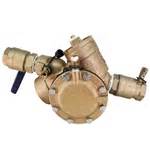- Written by water

You may not have heard of backflow preventer valves, but they actually play an important part in the general health and safety of the public. This article will tell you just how important those backflow valves are, and if you have any responsibility to have them installed on your property. If you have any questions after reading this article, give us a call at (817) 996-2000 and we’ll do our best to answer them.
What does a backflow preventer valve do?
The obvious answer is this: a backflow preventer valve prevents backflow, obvious until you realize that most people are not aware of backflow or what it is.
Backflow is potentially one of the worst health concerns in the United States, and has been since the first public water system was installed. To understand backflow, one must understand how water arrives at your home. Water is “pumped” from a city’s main water supply to all of the structures in that city. It is “pumped” using water pressure. Pressure is applied at the Water Supply Reservoir, and water then flows through the water pipes to its final destination, which is your kitchen sink, your bathroom, and your outdoor hoses. The clean water is then used, and the corresponding “used” water, or contaminated water, then goes into the sewer system. It works this way day in, day out, 24/7, 365, and all is well in our world.
Except when . . .
Occasionally the “water pressure” drops within the water system i.e. think broken water main pipe, and the corresponding drop in pressure can actually trigger a reverse flow of water. In other words, contaminated water can flow back into the clean water supply.
Not so good!
The only thing preventing this from happening is a backflow preventer valve. This is, quite literally, a one-way valve which does not allow water to flow in the wrong direction. Ever since the Clean Water Act of 1971, backflow devices have been required in all city water supply systems at properties where the risk is large that backflow might occur.
More backflow prevention steps
In addition, the Clean Water Act also requires that backflow devices be inspected annually, and that only approved backflow parts be used in any backflow system. The inspections must be carried out by certified backflow inspectors, and their test results filed with the city annually.
And that is why you have clean water to drink!
What is your responsibility in all of this? If your property is considered to be a potential risk, the city should notify you of your responsibility. You can also check with your city Water Department to see if your property requires a backflow device. If it does, you fall under the “annual test” requirements. Again, check with your local water department. They can also give you a list of licensed and certified backflow testers.
Feel free to call us if you have questions. We are City Backflow Testing out of Fort Worth, Texas, and backflow prevention is what we do. We will be happy to answer any questions you might have.
Posted in Backflow Prevention

